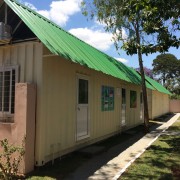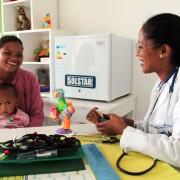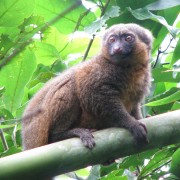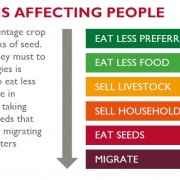
The Minister of Public Health, Pr. Lalatiana Andriamanarivo and the Mission Director of the U.S. Agency for International Development (USAID), Michelle Godette, officially inaugurated the entomology department of the National Malaria Control Program’s (NMCP) new insectarium.

The crowd had swelled to about thirty people. All of them were young girls and mothers. Some already carried a baby in their arms. They were intently listening to the community health educator explain the different methods of family planning available at the health center.

It has been 25 years since Ranomafana National Park, noted for its rich rainforests, incredible diversity of lemur species and bubbling hot springs (Ranomafana means ‘hot water’ in the Malagasy language), was officially made one of the country’s first national parks in 1991. Over those years the park has delighted thousands of tourists, trained a new generation of biological researchers and development professionals, and revealed many new wonders and scientific discoveries.
Madagascar has been experiencing a prolonged and deepening drought in the south of the country for four years now, which has led to alarming levels of food insecurity. The crisis has resulted in complete crop failures in a region where most farmers depend on rain-fed agriculture and livestock

The southern region of Madagascar has been experiencing a prolonged drought, amplified by the effects of climate change and the El Niño climate phenomenon, since 2013. The United States is especially concerned about the alarming levels of food insecurity in southern Madagascar where 900,000 people need emergency food assistance. The U.S. government is ramping up its response as needs continue to escalate during the lean season into early next year.








![Cover: Paradise Lost? Lessons from 25 years of environment programs in Madagascar - Click to read publication [PDF, 3MB] Cover: Paradise Lost? Lessons from 25 years of environment programs in Madagascar](https://2012-2017.usaid.gov/sites/default/files/styles/732_width/public/nodeimage/paradise_lost_0.jpg?itok=klue3vb3)
Comment
Make a general inquiry or suggest an improvement.